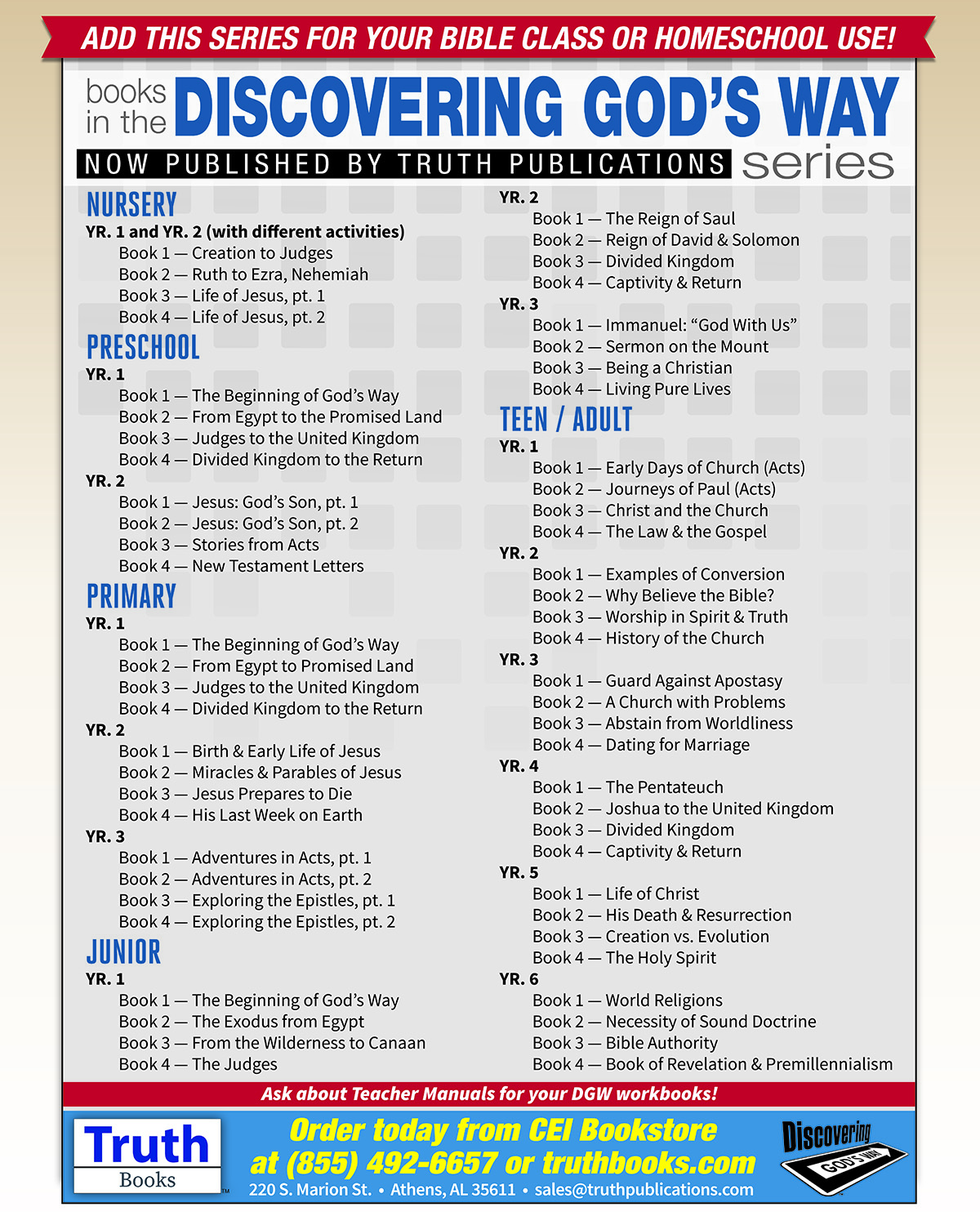

by Aleta Samford
Synopsis: The more effort we put into proper study and construction of our lessons, the more everything else involved in teaching falls into place.
In February’s article, we looked at one aspect of the Law of the Lesson (“The truth to be taught must be learned through truth already known.”), and that was: a lifetime of learning requires that foundations be laid upon what is already known. Who God is and what He has done is the most important foundation. This is where God’s word begins; this is what He wants us to hear.
The lifetime of learning begins with one lesson at a time, which brings us to the other aspect of the law. How can this principle guide us as teachers in the construction of the individual lesson? How do we formulate our lessons so that they effectively lay the proper foundations of who God is as found in His word?
Constructing a lesson used to be my least favorite part. I wanted to get on with the business of decorating the classroom, finding the liveliest visual, and providing the perfect handout. A study of these laws completely transformed my tendency to prioritize decorating and my perception of my role before the children. I was not the performer; the students were. Getting that straight brought fringe benefits as well. Burnout became a thing of the past; the children evidenced better behavior, and their thinking skills began to develop. What seemed to be burdensome before was all working out smoothly. Why? Because the principles of the mind were all employed, not the principle that I must do all the work.
Here is the plan I use when constructing my lessons. As I read the Bible Scriptures, I write down the answers to these six questions about the text: Who? When? Where? What? Why? and Wherefore? (or Therefore?). This is not a new method; journalists use it all the time. For every story they gather, they’re looking for the Who, the When, the Where, the What, the Why, and the Wherefore. It’s where they get their detail; it’s how they get our attention.
When it comes to teaching our children the word of God, we can’t afford to leave out any of the details. Class attention will improve as you become a better narrator; you will become a better narrator because you will strengthen your observation skills.
Maybe you have tried this method, but grown tired of it. I know that I have. I’ve cut corners and rushed a lesson without seeking out the hidden nuggets, and it never fails: my lesson comes across as tired, and student attention tends to wander.
After I mentioned this technique in one of my lectures, stressing that even the teacher of the smallest children can benefit from it, I received this feedback from a young mother and teacher who had attended:
I was in the middle of teaching the 1-2-year-olds when we came to the lectures, so on the way home, I redid my lesson plan using your techniques instead of mine. It worked so well. I was doing Ezra and Nehemiah and was really stumped as to how to teach it to such a young age.I think the reason people rush to the workroom for ideas first is because they are so afraid of messing it up and won’t try things on their own. The real nitty-gritty on how to write your lesson was the most helpful of your lecture.
Heading to the workroom first is not what will make our teaching “right” but gathering the facts from the text will. You will soon have more ideas than you know what to do with. The Who will help you pin down proper visuals to tell the story; Where will generate maps, When will make sure you have a timeline and keep the bigger picture always before the children; What will open up more ideas than you can handle to decorate your room with themes and drills; Why and Wherefore will help you guide the (older) students in proper thinking on the things of God.
This method helps you study the text and get “the truth to be taught” in your mind and heart. In facing the children, you will know exactly what they need to hear to build on “the truths already known.” You’ll be able to handle unexpected questions and situations and to recover when attentions are lost. The children notice a well-prepared and astute teacher, and they will positively respond to them.
Author Bio: Aleta is the wife of Gene Samford who preaches for the church that meets in Kemp, TX. She has taught Bible classes for forty-four years and, to help other women join the ranks, presents a series of lessons based on God’s word, The Seven Laws of Teaching, and her own experiences. She may be reached at aletas10@sbcglobal.net.
